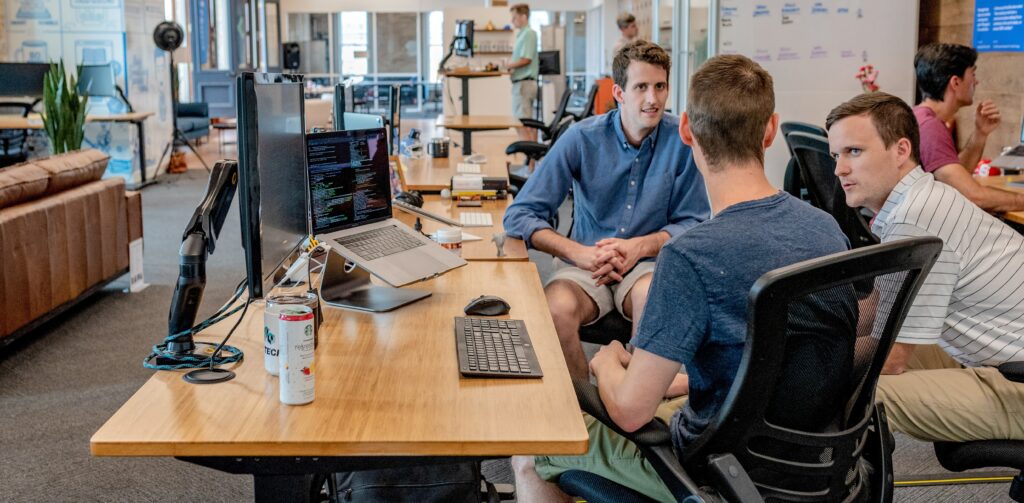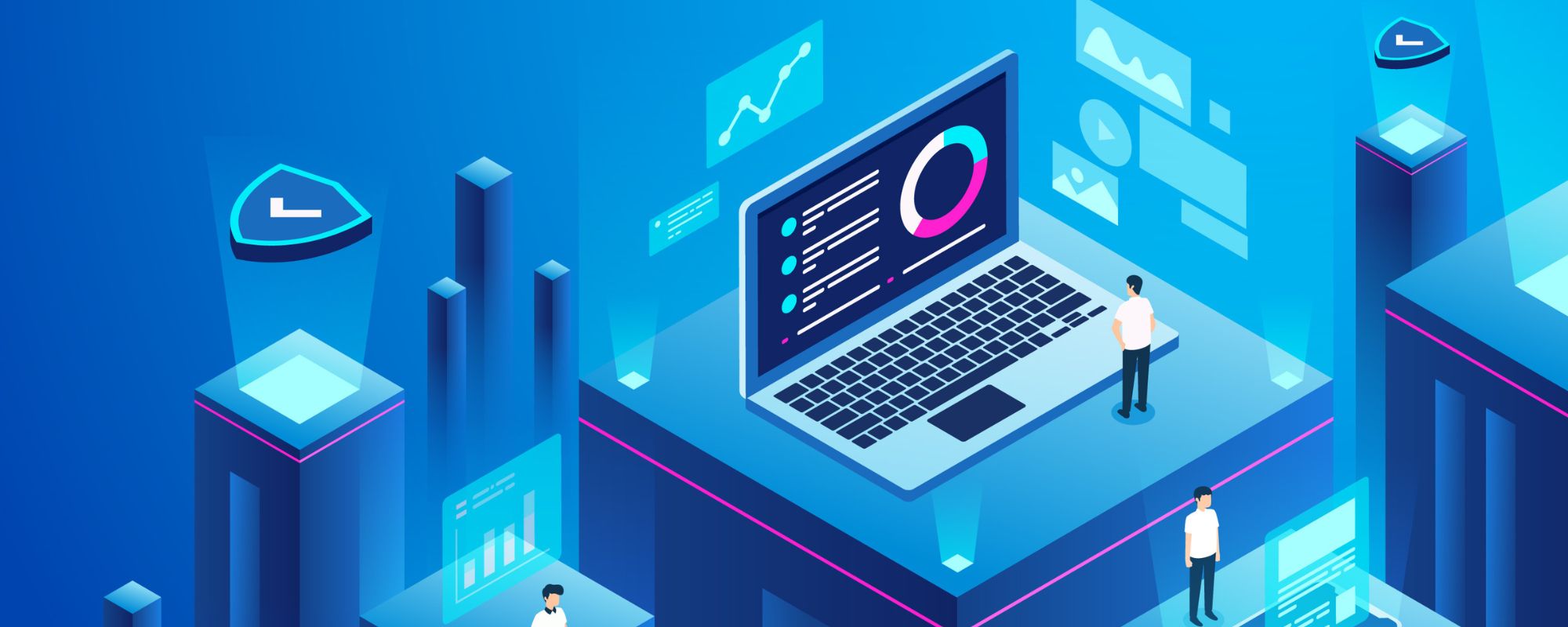The digital panorama is in a continuing state of evolution. Some of the transformative shifts within the software program business has been the transfer to SaaS vs conventional software program. This revolution has modified the best way companies function, making software program extra accessible, cost-effective, and environment friendly.
On this complete information, we’ll delve deep into the SaaS benefits and the way it compares with conventional software program.
Understanding the Fundamentals of SaaS and Conventional Software program
Definition of SaaS
SaaS, or Software program as a Service, is a supply mannequin the place software program is accessed on-line through a subscription-like Google Drive, moderately than being purchased and put in on particular person computer systems.
SaaS options are hosted and maintained by the service supplier, eliminating the necessity for customers to handle the software program themselves. Some standard examples of SaaS platforms embrace Gmail, Slack, Asana, and Salesforce.
Definition of Conventional Software program
In distinction, conventional software program, sometimes called on-premise software program, is a mannequin the place software program is purchased, put in, and operated on the consumer’s personal {hardware}.
This mannequin requires the consumer to handle the software program, together with set up, upkeep, and updates, resulting in greater operational prices and elevated complexity.

How SaaS and Conventional Software program Fashions Differ
Listed here are a number of the key variations between SaaS and conventional software program:
Deployment and Upkeep: Conventional software program requires customers to put in the software program on their particular person machines or servers. This course of might be time-consuming and infrequently requires the help of IT professionals. Moreover, the duty of sustaining the software program falls on the consumer, which incorporates troubleshooting, updates, and backups.
Then again, SaaS is a web-based mannequin the place the software program is hosted on the supplier’s servers and delivered over the web. Customers don’t want to put in something on their machines. The SaaS supplier is answerable for sustaining, updating, and securing the software program, simplifying the customers’ expertise.
Value Construction: Standard software program sometimes requires a major upfront funding to buy the license. Moreover, companies might must put money into {hardware} infrastructure to help the software program and pay for ongoing updates and upkeep.
In distinction, SaaS follows a subscription-based pricing mannequin. Customers pay a recurring charge, often month-to-month or yearly, which regularly consists of upkeep, updates, and buyer help. This mannequin might be extra inexpensive, particularly for small companies, because it spreads the prices over time.
Scalability and Customization: Conventional software program often comes as a one-size-fits-all resolution. If a enterprise grows or its wants change, it could must buy extra licenses and even completely new software program.
SaaS options, nonetheless, are extremely scalable. Companies can rapidly and simply alter their subscription plan to accommodate development or altering wants. Many SaaS suppliers additionally supply customization choices to tailor the software program to a enterprise’s particular necessities.
Accessibility and Mobility: With conventional software program, entry is mostly restricted to the machines on which the software program is put in. This will restrict mobility and make distant work difficult.
SaaS options are accessible to any gadget with an web connection, no matter location. This allows larger flexibility, as customers can entry the software program from residence, whereas touring, or from some other location.
Knowledge Safety and Restoration: In a conventional software program setup, knowledge safety and restoration are sometimes the consumer’s duty. If a server or laptop crashes, the consumer might lose all their knowledge except they’ve a backup system in place.
SaaS suppliers often have strong knowledge safety and restoration measures in place. Knowledge is routinely backed up and saved in safe, off-site areas. Within the occasion of a system failure, customers can rapidly get well their knowledge.
The Benefits of SaaS vs Conventional Software program
The shift in the direction of SaaS is pushed by the quite a few benefits it presents over conventional software program fashions. These embrace:
Value-Effectiveness: One of many main benefits that SaaS presents is its cost-effectiveness. SaaS eliminates the necessity for customers to buy, set up, and preserve software program on their very own computer systems or servers, saving on {hardware} bills, upkeep, and IT staffing.
Scalability and Flexibility: SaaS options allow companies to scale their utilization up or down based mostly on their wants. Customers can simply add or take away options, making it easy to adapt to modifications in necessities or enterprise development.
Accessibility: SaaS functions might be accessed from any gadget with an web connection, offering customers with the flexibleness to work from anyplace at any time. This function is especially helpful for distant groups or companies with workers unfold throughout areas.
Automated Updates: SaaS suppliers handle software program updates and safety patches, guaranteeing that customers all the time have entry to the newest options and enhancements with out having to fret about time-consuming handbook updates.
Ease of Integration: Many SaaS functions are designed to combine with different software program options, making it simpler for companies to create a cohesive expertise ecosystem. This allows seamless knowledge sharing and streamlined workflows throughout numerous platforms.
Sooner Deployment: SaaS options are sometimes faster to deploy in comparison with conventional on-premise software program. Because the software program is already put in and configured on the supplier’s servers, companies can begin utilizing it instantly after subscribing.

The Way forward for SaaS
As we transfer into the longer term, the SaaS panorama will proceed to evolve, pushed by advances in expertise, altering enterprise wants, and the rising adoption of open supply and AI/ML.
Listed here are some key traits more likely to outline the SaaS house within the coming years:
AI/ML Integration: Synthetic Intelligence and Machine Studying will revolutionize SaaS, enabling extra clever and personalised consumer experiences, improved analytics, and the automation of varied processes.
Cell-First Strategy: With the proliferation of smartphones, SaaS suppliers might want to undertake a mobile-first method, designing their functions to be accessible and user-friendly on cell units.
The proliferation of the API Economic system: The growing significance of Software Programming Interfaces (APIs) will result in extra interconnected and interoperable SaaS functions, enabling companies to construct personalized options by integrating numerous companies.
Emphasis on Safety and Compliance: As extra companies depend on SaaS options, safety, and compliance will stay high issues. SaaS suppliers might want to prioritize these points to win the belief of their prospects.
Transitioning from Conventional software program to a SaaS method
Transitioning from conventional software program to Software program as a Service (SaaS) requires strategic planning and cautious implementation. SaaS is a technique of software program distribution the place a cloud supplier hosts apps and delivers them to customers through the web, providing numerous benefits over on-premise software program similar to cost-efficiency, fast time-to-value, and constant pricing.
- The transition course of is an in-depth evaluation of the present software program and its compatibility with the SaaS mannequin. It’s important to grasp the variations between SaaS and on-premise software program like deployment, value, scalability, customizability, upkeep, and help, amongst different elements.
- As soon as the evaluation is finished, the following step is to arrange the correct processes for the migration. This entails getting ready the IT infrastructure in alignment with the cloud supply mannequin of SaaS, which considerably reduces upfront prices.
- The migration technique ought to think about the multitenancy structure of SaaS and its simple personalization options. An efficient technique also needs to account for points like safety, integration, and knowledge backup and restoration.
Put up migration, some great benefits of SaaS change into evident. There’s real-time managing entry to safety, efficiency, and availability, alongside minimal administration prices. Furthermore, SaaS options present simple administration, making them a favourite amongst many companies.
Conclusion
The evolution of SaaS has been a transformative power within the software program business. By providing larger flexibility, cost-effectiveness, and innovation, SaaS has proved to be a compelling various to conventional software program.
As expertise continues to evolve, and companies proceed to acknowledge some great benefits of SaaS, the adoption of SaaS is barely set to develop, heralding a brand new period on the planet of software program. Appscrip offers SaaS improvement companies for entrepreneurs and startups trying to break into the market.


